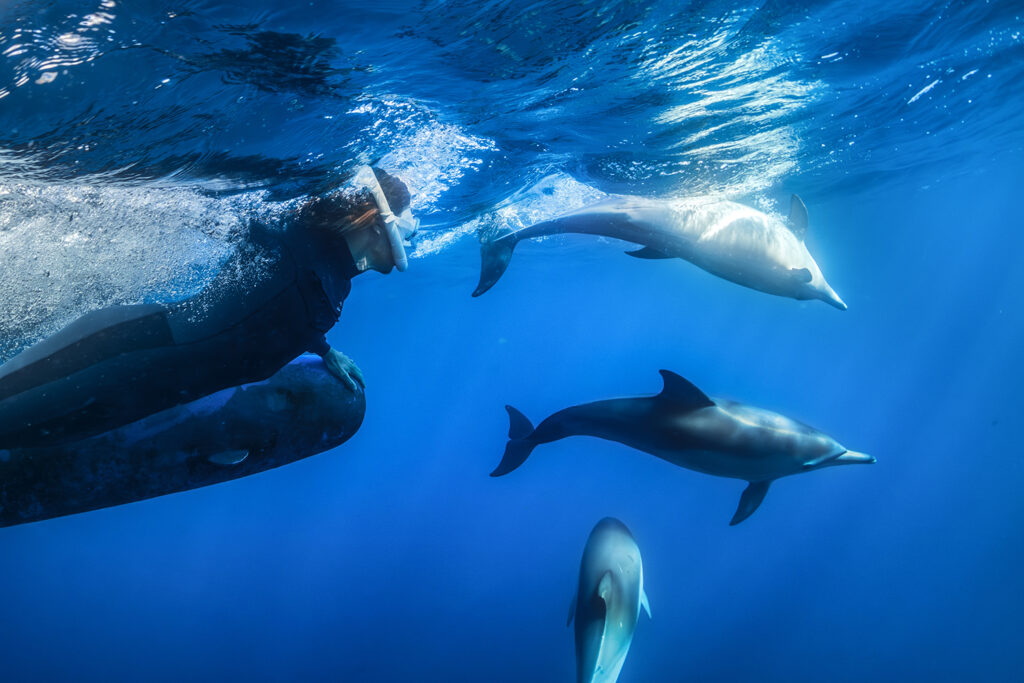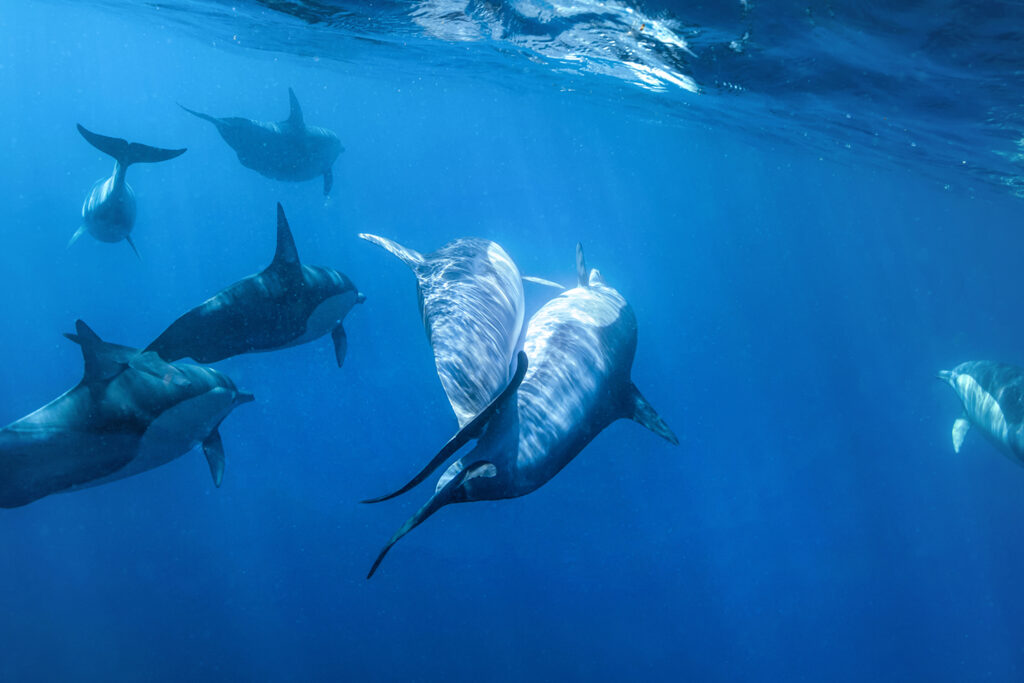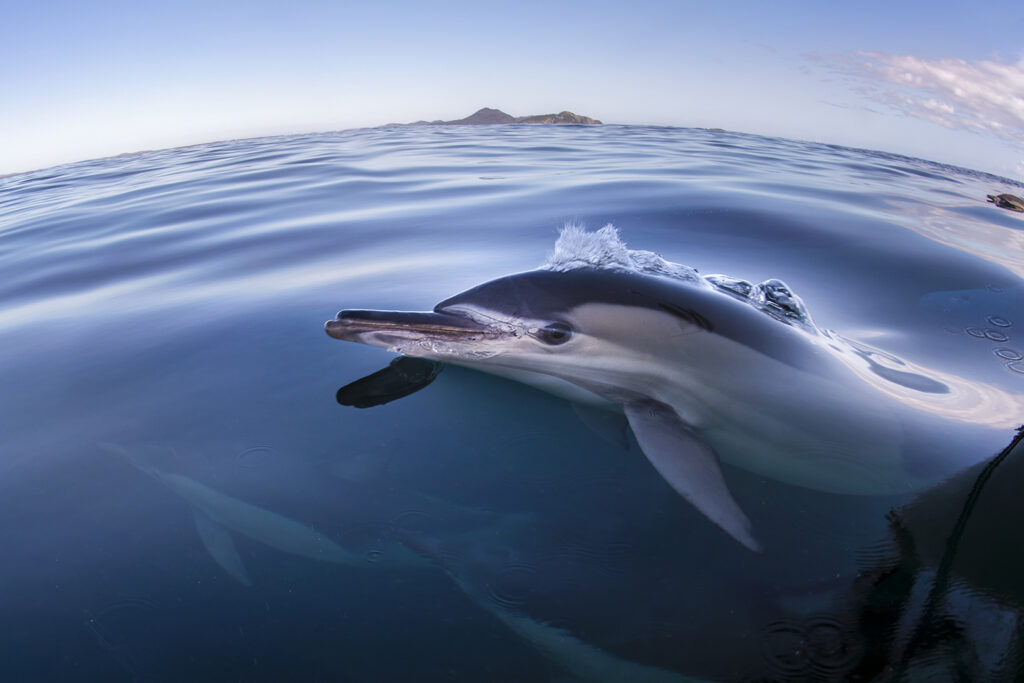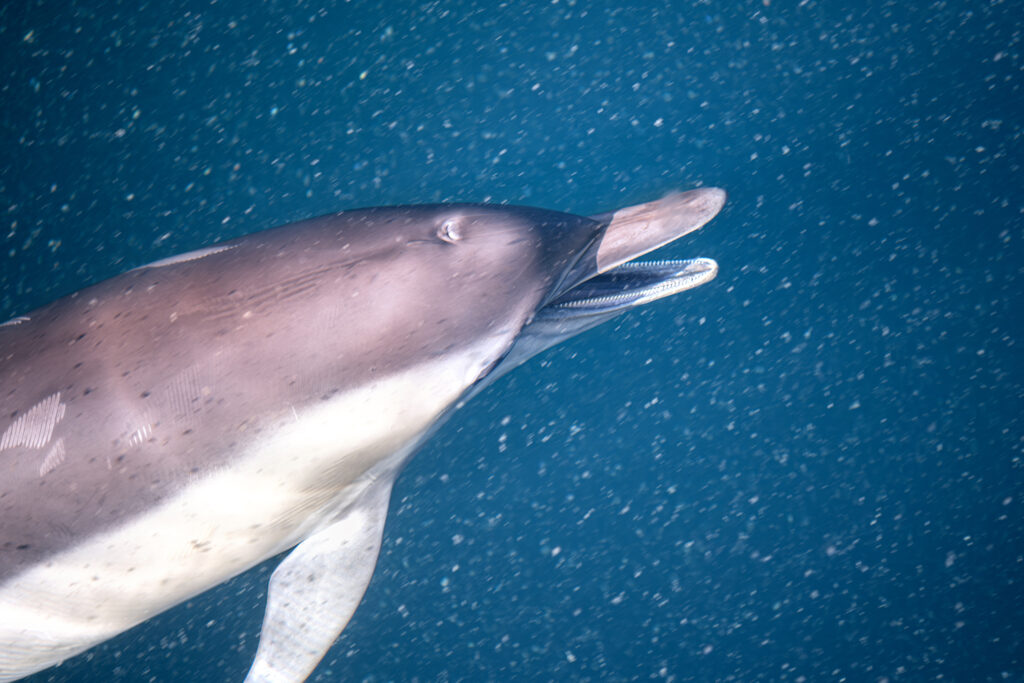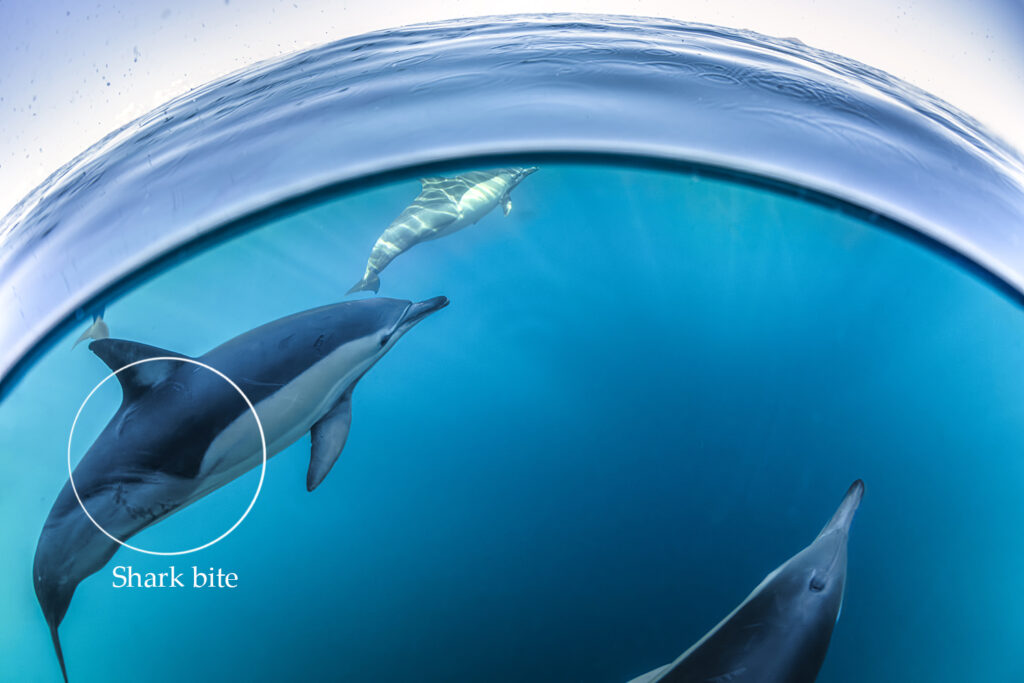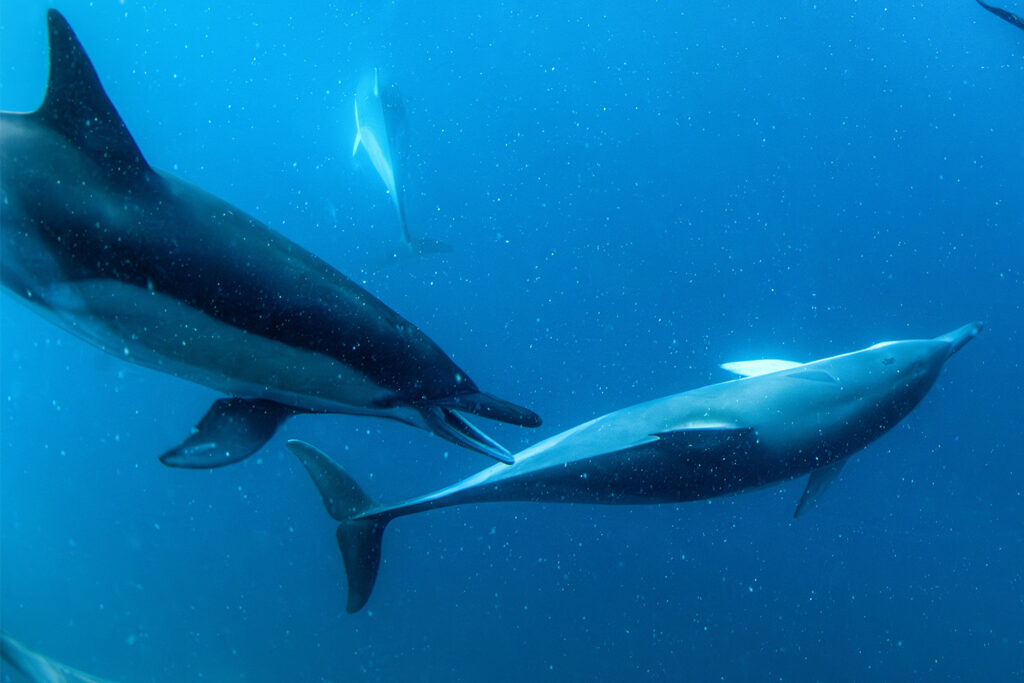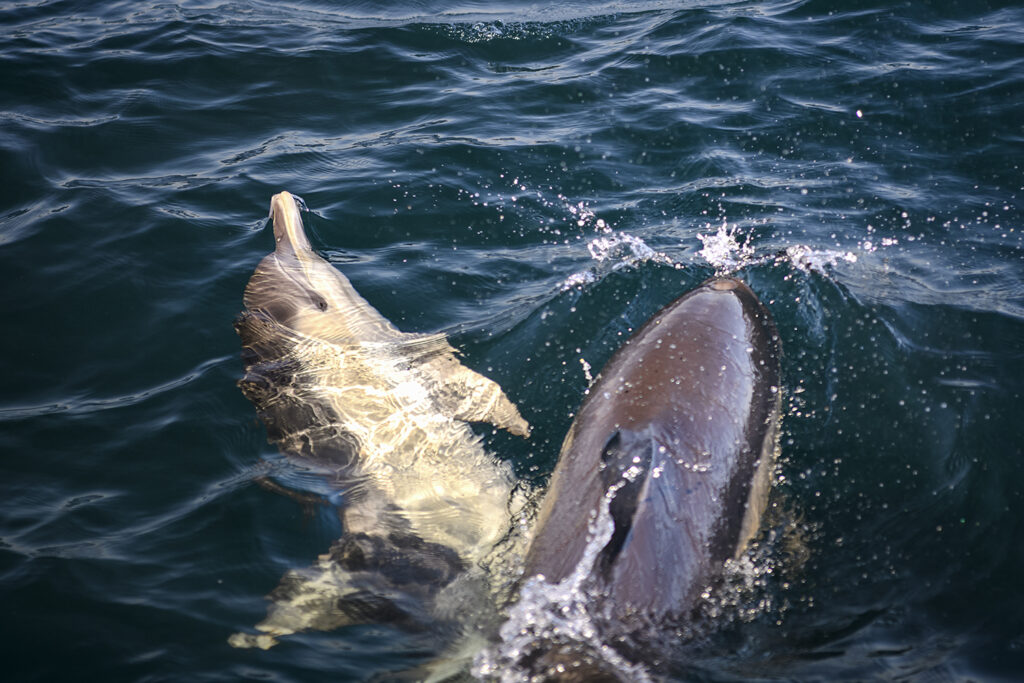The Joy of Riding Waves
Dolphins can feel even the slightest movements of currents around their bodies, and being propelled along by a wave is a special thrill for them. Boats also generate pressure waves ahead of them, similar to ocean swells. These man-made waves are just as appealing to playful dolphins, which is why they’ve frolicked ahead of sailors for as long as boats have existed. In fact, many dolphin and whale species are known to hunt, travel, or socialise together – and dolphins have even been seen pestering whales to make them swim faster, just so they can catch a ride.
Skin Secrets
A dolphin’s skin is between nine and twenty times thicker than human skin, and it regenerates quickly, with a new outer layer forming roughly every two hours. They also secrete substances that make it harder for barnacles to attach. These features help explain why dolphins often look so smooth and clean.
Sexual Behaviour and Social Bonds
Dolphins are highly promiscuous and engage in sexual activity for both pleasure and social bonding. Females often mate with multiple partners, and individuals of both sexes have been observed using creative methods to masturbate. In captivity, dolphins sometimes engage in homosexual behaviour. In the wild, males use copulation to reinforce alliances and also assert dominance.
The Dolphin Smile
The iconic “dolphin smile” isn’t a smile at all. Their facial structure is fixed, and what we interpret as an expression is actually an illusion – pareidolia at work. It’s important not to assume that dolphins are always happy based on appearances alone.
Teeth and Warnings
Dolphin teeth aren’t for chewing. They’re used to catch and hold slippery prey, which is then swallowed whole. Open jaws serve a different purpose – underwater, they’re a warning. When a dolphin opens its mouth at another, it usually means: “Back off.” And if that warning isn’t taken seriously, it may be followed by a bite.
Rake Marks and Rivalries
Evidence of these disputes can be seen on their skin. Parallel lines of tooth marks, called “rake marks,” often cover the backs and fins of bottlenose dolphins. These marks accumulate over time, especially on males, making their bodies appear pale or even white in some areas.
Extraordinary Healing
Dolphins are capable of surviving severe injuries, including shark bites. Their healing abilities remain somewhat mysterious, but they don’t seem to bleed out even from deep wounds. These injuries often heal without infection, and in many cases, the dolphin’s original body shape is nearly restored.
Aggression and Exile
Male dolphins, especially as they age, tend to carry more bite scars, a testament to conflicts over mates or dominance. Some fights become so intense that the defeated dolphin may go into self-imposed exile from the pod.
Infanticide and Porpoise Attacks
Male bottlenose dolphins have been observed committing infanticide – killing calves that aren’t their own, presumably to bring the mothers back into reproductive condition. In some cases, dolphins have even killed porpoises, despite there being no clear competition for food. The reason for this aggressive behaviour remains unclear.
Cross-Species and Unusual Encounters
Dolphins have been observed engaging in sexual activity with other dolphin species. These encounters can be rough, and males have shown aggression toward both females and other males. In some cases, male dolphins team up to herd a female in estrus, using intimidation and force to increase their chances of mating. Dolphins have also occasionally behaved sexually toward other animals, including humans – behaviours that are rare but documented.
A Book About Dolphins
Many of the fascinating facts in this story come from A Book about Dolphins, written by David and Lesley. After more than a decade working closely with wild dolphins in the Port Stephens – Great Lakes Marine Park, their passion and knowledge shine through every page.

